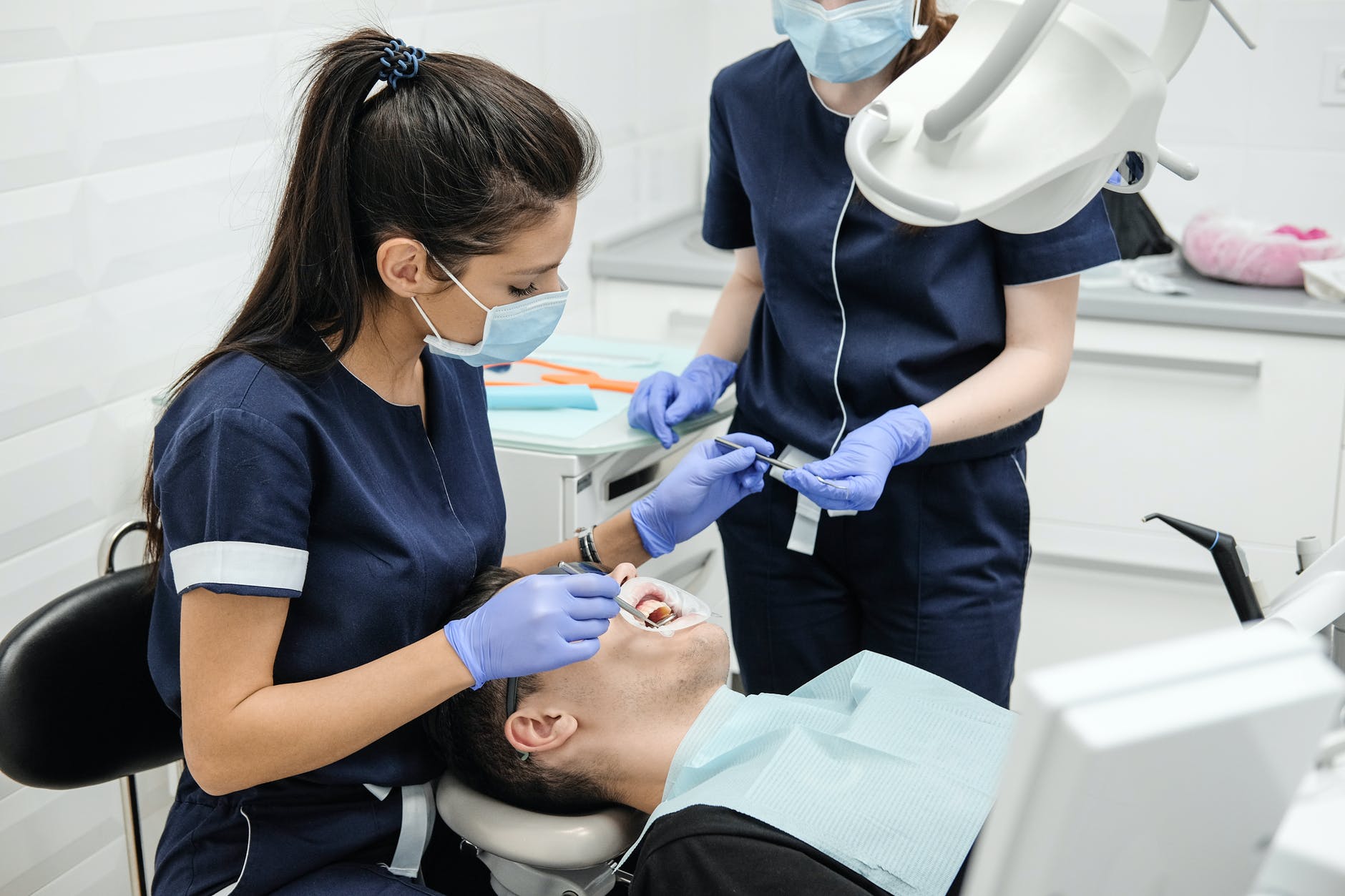
Photo by Evelina Zhu on <a href="https://www.pexels.com/photo/female-dentist-with-assistant-curing-teeth-of-patient-5434017/" rel="nofollow">Pexels.com</a>
Dental patients must act quickly if they notice signs of gum disease. Brushing and flossing decrease gum disease and protect the teeth and gums, but all patients need routine dental services, too. An examination shows the dentist all existing damage and cleanings eliminate debris that causes tooth damage. By reviewing the signs of gum disease, patients know when to set up professional services.
1. Red and Swollen Gums
Gingivitis is often the first sign of gum disease, and the patient will experience red, swollen gum that may bleed. When brushing their teeth, the patient will notice that their gums bleed more. Gingivitis is a common condition that many pregnant women may experience throughout their pregnancy, too.
If the patients have gingivitis, the dentist will provide a medicated mouthwash to slow down the progression of the gum condition. Medication can reverse gingivitis and decrease the risk of periodontal disease. Patients who suspect that they have gingivitis find out by setting up Dental Services Near Me today.
2. Persistent Bad Breath
Bad breath is a common sign of gum disease, and as the teeth begin to rot and decay, they will become worse. However, bad breath could also indicate oral cancer. The patient will need a complete dental examination and cancer screening to diagnose their condition.
During the examination, the dentist will examine the teeth for damage and set up repairs or extractions as needed. If the patient has gum disease, they could lose their teeth if they do not undergo intensive treatments as often as necessary to keep the teeth as healthy as possible.
3. Receding Gum Lines
Receding gum lines are another sign of gum disease, and the teeth will appear longer. Periodontal disease destroys gum tissue, and the gums shrink up and move away from the teeth. The teeth become loose and could fall out. The dental hygienists complete more complex cleaning services to remove damaged gum tissue. The procedures are performed at least twice a year until the gum disease becomes more severe.
The dentists can also complete services to reinforce the teeth and stop them from becoming dislodged. Loose teeth are a common problem with periodontal disease, and some patients lose all their teeth because of the disease.
4. Pockets Around the Gum Lines
Gum pockets are a sign of advanced periodontal disease, and bacteria, debris, and food could become stuck in the pockets. During cleaning services, the hygienist removes debris from the pockets. If they aren’t cleaned often, the patient is at risk of developing tooth infections. The pockets are created as the gums detach from the teeth and allow the teeth to rot down to the root.
Many dental professionals will recommend cleaning services more often at this stage. If the teeth are too far gone, the dentist may recommend multiple extractions to decrease the increased risk of infections. A tooth infection could enter the bloodstream and cause more profound health risks for the patients.
Dental patients must follow proper dental hygiene practices. If they do not brush and floss, the patient could develop gum disease. Periodontal disease could cause total tooth loss and persistent tooth and gum infections. At the first signs of gum disease, the patients must seek dental services including examinations and assessments. Gingivitis develops first, and patients need proper treatment to eliminate gingivitis and protect their teeth and gums.


